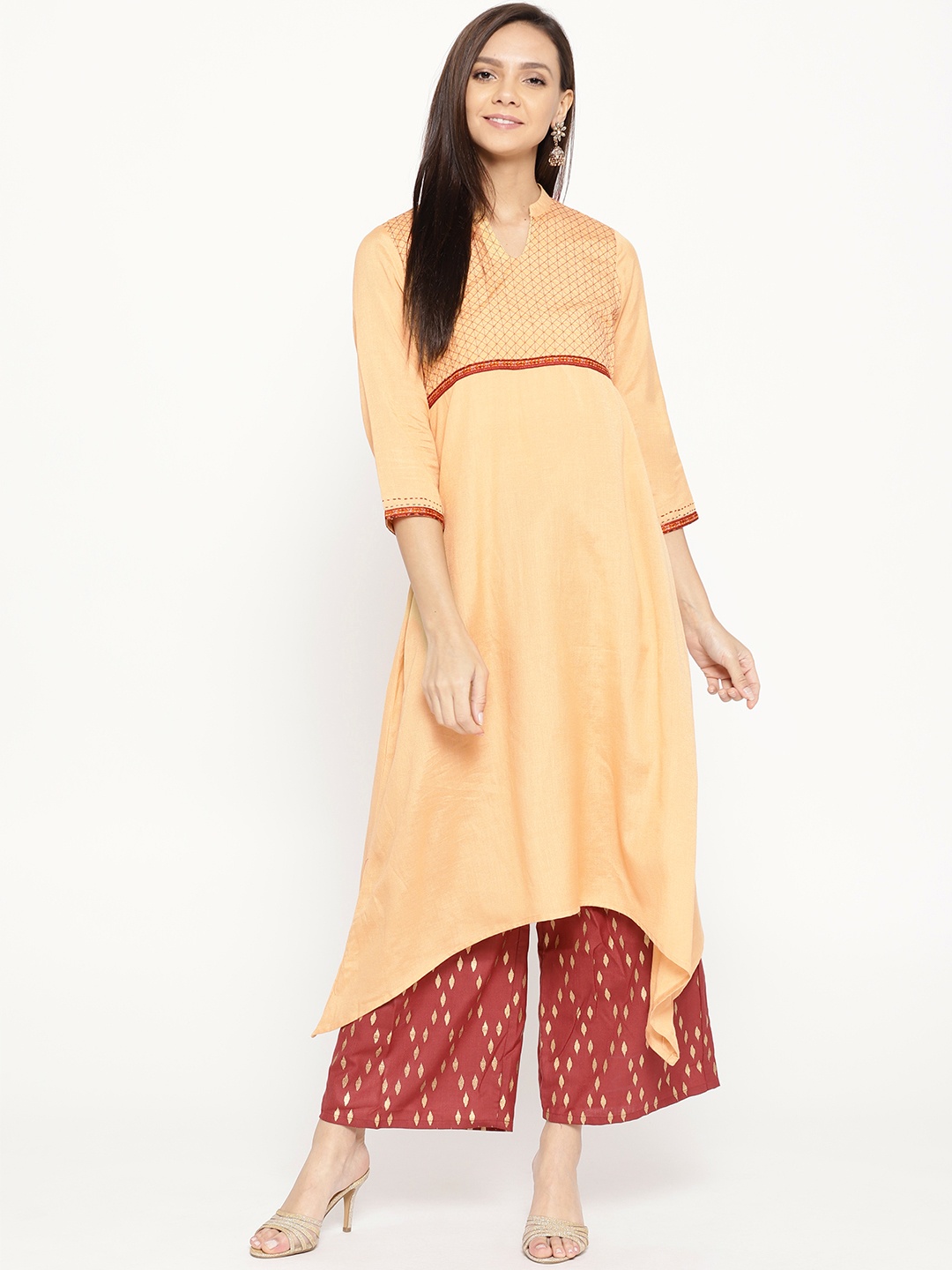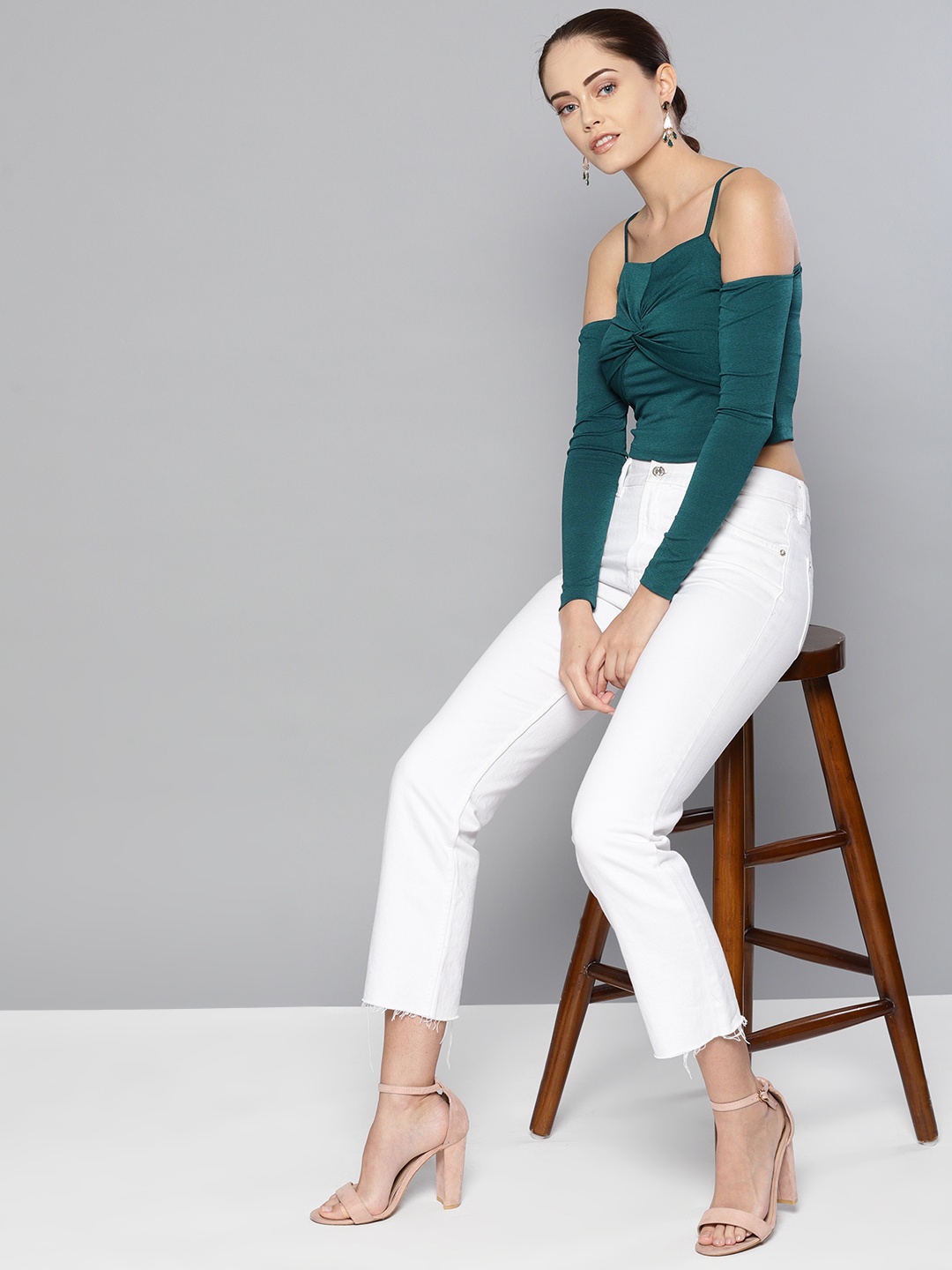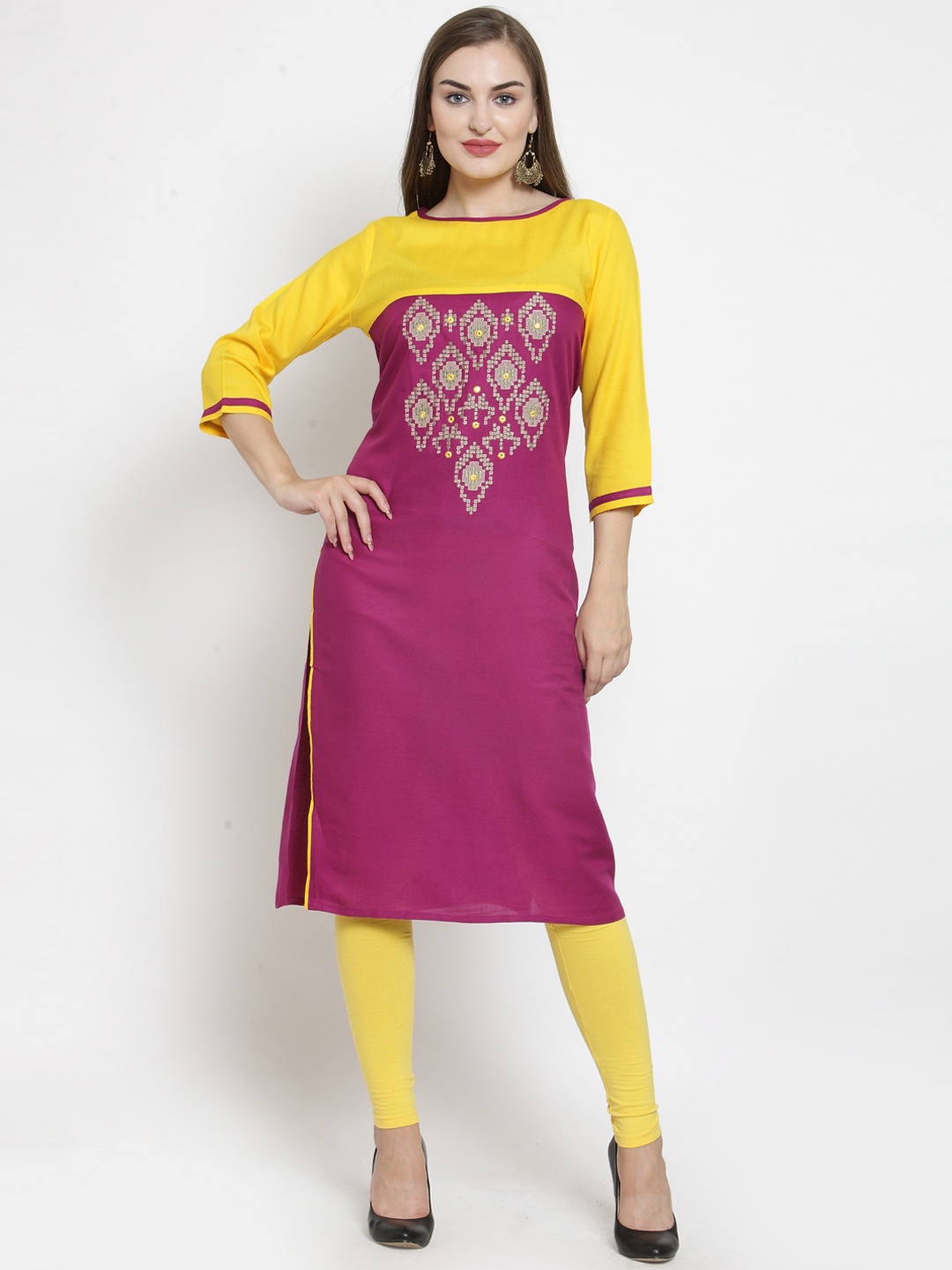Kurtas That Do Not Stick To The Body? Know The Right Fabric Weight
There is nothing worse than slipping into a stylish kurta only to find it clinging awkwardly the moment the humidity hits. Discover how to pick kurtas that let your skin breathe and never stick uncomfortably. Also, check top picks from BIBA, Rangmanch, Aramya to Vishudh.

Say Goodbye To Sticky Kurtas: Choose The Right Fabric Weight For Breezy Comfort.
Heading out for a family brunch, decked up in your favourite kurta? Feel confident? Just wait until the humidity strikes! Suddenly, your once-elegant kurta feels like a second, clingy skin. It's a familiar tale during the long monsoon months when comfort competes with style. What most people don't realise is that the weight of a fabric makes or breaks how a kurta feels. Lightweight doesn't always mean see-through or flimsy; it means breathable, soft, and flowy enough to move with you, not against you. The trick lies in balancing airiness and structure, so the fabric doesn't cling.
So, if your kurta has ever betrayed you with its sticky, sweaty, or saggy form, it's time to decode the mystery of fabric weight. Here's how to make sure your next kurta does not stick to the body and feels as comfortable as it looks. Also, check the top product picks from BIBA, Rangmanch, Aramya to Vishudh.
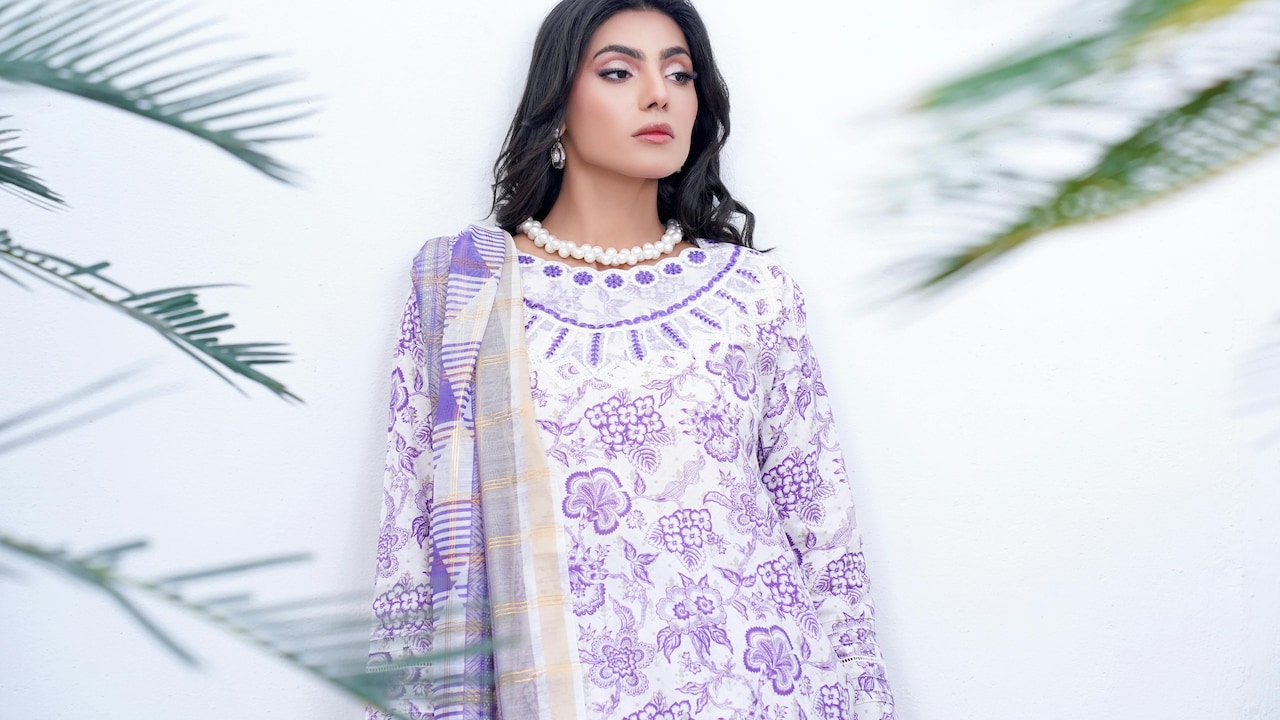
Kurtas That Do Not Stick To The Body? Know The Right Fabric Weight
Photo Credit: Pexels
Finding the Perfect Fabric: What Makes a Kurta Truly Comfortable
1. Understanding Fabric Weight, The Unsung Hero of Comfort
Fabric weight determines how heavy or light a material feels. It's measured in GSM (grams per square metre), and this tiny number influences everything, from drape to breathability.
Lighter fabrics (around 100–150 GSM) are airy and perfect for warm days. They let your skin breathe and reduce that dreadful cling when temperatures soar. Medium-weight fabrics (150–200 GSM) offer a balance, structured yet comfortable. Anything heavier tends to trap heat and moisture, making it ideal only for cooler weather or evening wear.
Imagine the difference between a feather-light cotton voile and a dense brocade. The first dances with the breeze, while the latter stands stiff and firm. Choosing the right GSM helps ensure your kurta flatters without feeling like a thermal blanket.
So next time you're shopping, flip that fabric, feel its texture, and ask about GSM, it's the small detail that defines big comfort.
2. Cotton, The Classic That Never Fails
Cotton is the backbone of everyday wear for good reason. It's soft, absorbent, and naturally breathable. The magic lies in its fibre, tiny hollow strands that let air circulate freely. This prevents sweat from building up, which means no sticky surprises halfway through your day.
Lightweight cotton fabrics such as cambric, mulmul, and voile fall beautifully without clinging. A 100–120 GSM cotton kurta feels light yet crisp, ideal for everything from workdays to weekend markets.
However, beware of overly thin cottons, they can wrinkle easily and lose shape after washes. Blended cottons with a touch of linen or viscose solve this, giving a smoother fall and subtle sheen.
Pair a cotton kurta with oxidised jewellery or a vibrant dupatta, and you've got the perfect blend of comfort and charm. Cotton proves that simplicity, when chosen wisely, never goes out of style.
3. Linen, The Breath of Fresh Air
If comfort had a signature fabric, it would be linen. Derived from flax, linen fibres are slightly thicker, creating a textured surface that keeps air flowing freely. It absorbs moisture quickly and dries in no time, perfect for humid days.
A linen kurta with a GSM between 120 and 180 offers a structured yet relaxed fit. It doesn't cling because the fabric naturally stays away from the skin. The slight stiffness adds elegance, giving kurtas a crisp, effortless drape.
Of course, linen wrinkles, that's part of its charm. Those fine creases tell a story of lived-in ease, like the carefree folds of a summer afternoon. For a more refined touch, opt for linen-cotton blends that retain the breathability while softening the texture.
Whether it's a family gathering or a casual workday, linen kurtas whisper understated sophistication, making comfort look timeless.
4. Khadi, Where Tradition Meets Breathability
Khadi isn't just fabric; it's a philosophy of mindful living. Handspun and handwoven, it's inherently airy, making it one of the most comfortable options for daily wear. The uneven weave allows constant airflow, ensuring your kurta never sticks even on the hottest days.
With a GSM range of 100–160, khadi is lightweight yet sturdy. Its slightly coarse texture absorbs moisture and keeps you cool. Over time, it softens beautifully, becoming more comfortable with every wash.
A khadi kurta brings character, it carries subtle imperfections that make each piece unique. It pairs effortlessly with cotton churidars or denims, creating a grounded, earthy look.
What's even better? It's sustainable and locally woven, which means your comfort comes with a conscience. Khadi proves that traditional fabrics can feel utterly contemporary when chosen right.
Also Read: 5 Wedding Kurta Sets Under ₹699 For Women To Look Gorgeous Under A Budget
5. Mulmul, The Feather-Light Favourite
Mulmul (or muslin) is like wearing a gentle cloud. Originally woven for royalty, this ultra-light cotton is famous for its softness and airy texture. With a GSM of around 80–100, it's among the lightest fabrics available for kurtas.
Mulmul kurtas are perfect for sultry afternoons or casual outings. The fabric drapes delicately without sticking, even when layered with a dupatta. It soaks up sweat but allows it to evaporate quickly, keeping you dry.
The only caution, mulmul is delicate. Frequent washes or harsh detergents can weaken the weave. To make it last, handwash gently and dry in the shade.
A pastel mulmul kurta paired with silver jhumkas is pure summer bliss, light, breathable, and impossibly graceful. Sometimes, comfort doesn't need grand design; it simply needs the right touch.
6. Chanderi, Elegance Without the Weight
Chanderi blends sophistication with lightness. This traditional fabric, woven with silk and cotton threads, offers a translucent sheen without heaviness. Its GSM (90–120) makes it light yet luxurious.
Chanderi kurtas feel festive without the discomfort of brocade or silk. The fabric doesn't cling, thanks to its crisp weave and natural sheen. It glides against the skin, offering comfort and elegance in equal measure.
Perfect for weddings, pujas, or office events, Chanderi's charm lies in its understated glamour. Pair it with minimal jewellery and kolhapuri sandals for a classic look that breathes as beautifully as it shines.
With Chanderi, you can look dressed up while staying perfectly cool, a win-win for every occasion.
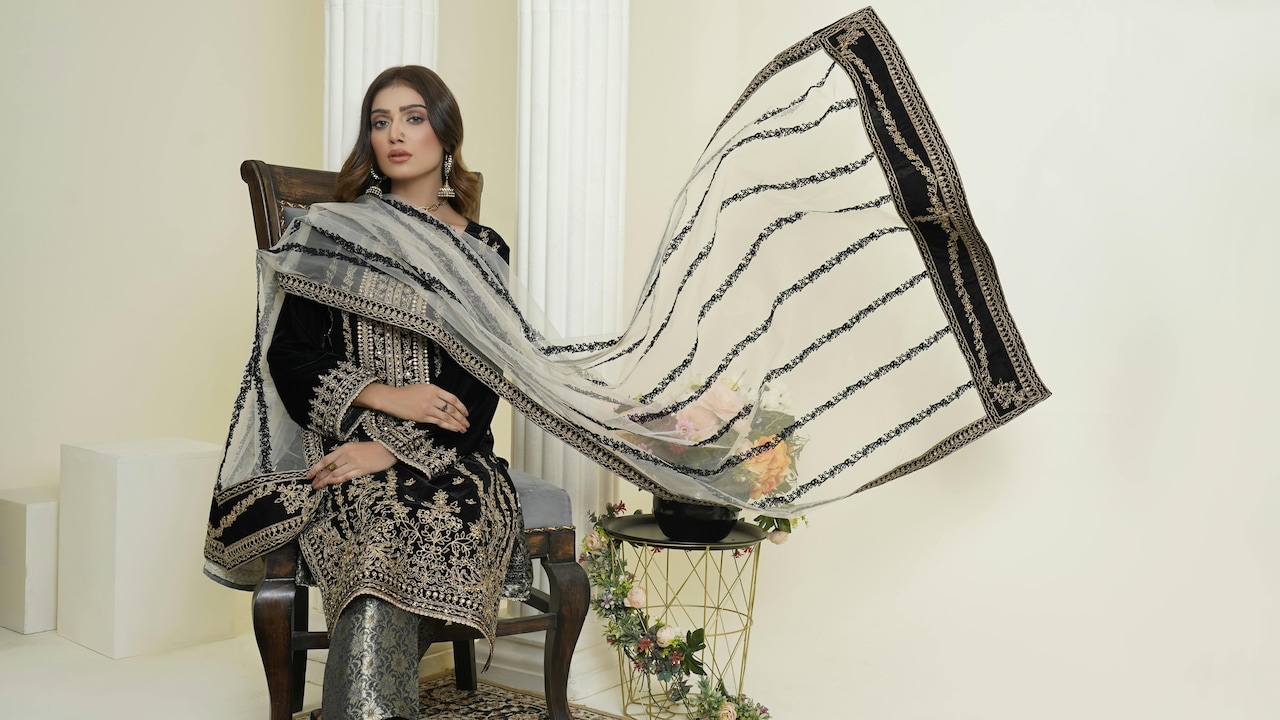
Kurtas That Do Not Stick To The Body? Know The Right Fabric Weight
Photo Credit: Pexels
7. Voile and Cambric, The Everyday Champions
Voile and cambric are the unsung heroes of everyday fashion. Both are fine cotton weaves, soft against the skin and light enough to stay airy.
Voile, with a GSM around 100, feels semi-transparent yet breathable, perfect for layered kurtas. Cambric is slightly heavier (120–150 GSM) and has a smoother surface, making it ideal for everyday wear.
Neither clings to the body, and both dry fast, perfect for unpredictable monsoon days. They also take dyes beautifully, so your wardrobe can burst with colour without compromising comfort.
Whether printed, embroidered, or plain, voile and cambric kurtas strike that elusive balance between function and flair. Slip one on, and you'll realise comfort can look just as graceful as glamour.
8. Handloom Cotton, For the Love of Texture
Handloom cotton tells a story in every thread. Unlike machine-made fabrics, it's woven slowly, giving it a natural unevenness that helps it breathe better.
A GSM of 120–160 gives it the perfect balance of structure and lightness. It never clings, even when humidity plays spoilsport. The texture feels alive, soft, yet grounded.
Handloom cotton kurtas carry rustic beauty. Whether dyed in earthy tones or adorned with block prints, they exude warmth and authenticity. You can pair them with handmade accessories for a wholesome, homegrown look.
Each handloom piece carries a whisper of craftsmanship, turning a simple kurta into wearable poetry.
9. Blends That Work, Cotton-Linen and Cotton-Silk
Sometimes the best of two worlds creates magic. Cotton-linen and cotton-silk blends combine breathability with refinement.
Cotton-linen (GSM 130–170) offers the crispness of linen but softens with the comfort of cotton. It's perfect for semi-formal occasions, giving a polished look without clinging.
Cotton-silk (GSM 140–180), on the other hand, adds a subtle sheen without the heat of pure silk. It drapes beautifully and is ideal for festive gatherings.
Both fabrics manage moisture well and hold structure without trapping sweat. Think of them as the middle ground between luxury and ease, tailored comfort that looks and feels right.
10. Care Tips To Keep Fabrics Breezy
Even the most breathable kurta can lose its charm if not cared for properly. The key lies in gentle maintenance.
Wash lightweight fabrics in cool water using mild detergent. Avoid wringing or machine drying, as they distort fibres and increase cling. Always air-dry in the shade to maintain colour and texture.
Iron while slightly damp for crisp results, and store folded instead of hanging to prevent stretching. For delicate fabrics like mulmul or Chanderi, use cotton covers to protect from dust.
A little care goes a long way. After all, comfort isn't just in wearing the right fabric, it's in keeping it alive season after season.
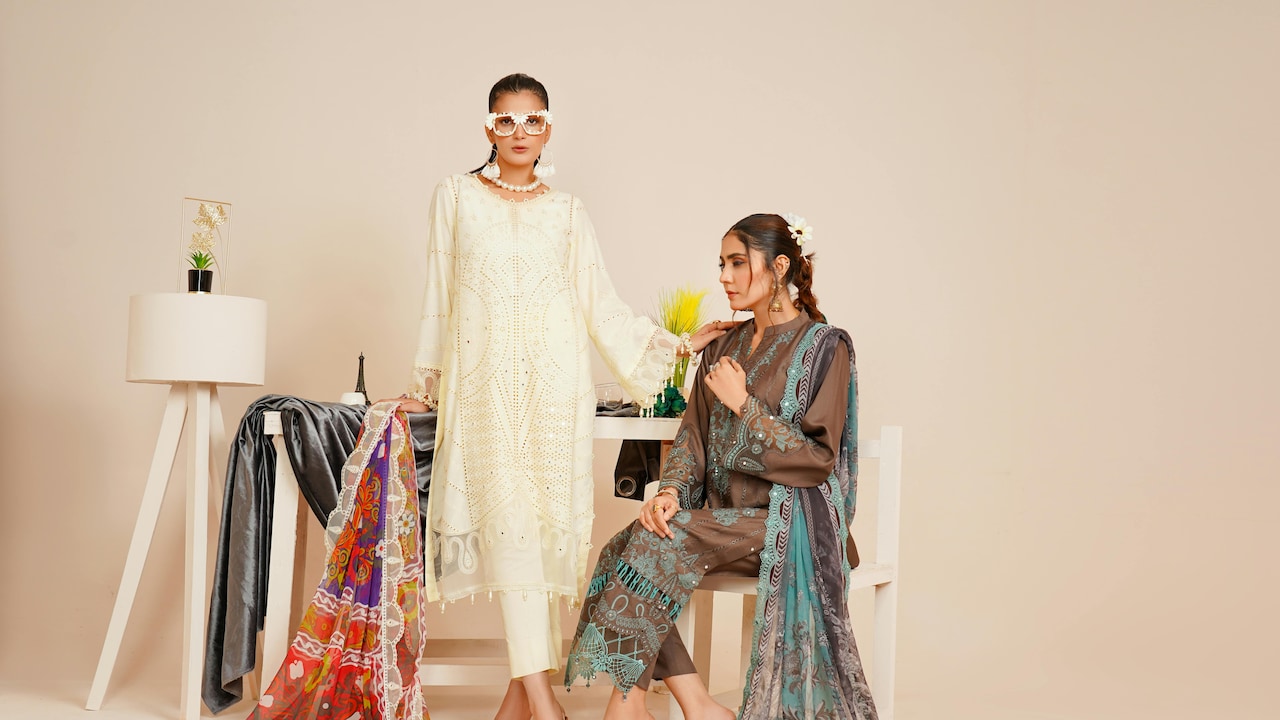
Kurtas That Do Not Stick To The Body? Know The Right Fabric Weight
Photo Credit: Pexels
Products Related To This Article
1. Vishudh Women Solid Pure Cotton Straight Kurta
2. Aramya Women Abstract Linen Straight Kurta
3. N N ENTERPRISE Pack of 2 Women Printed Khadi Cotton A-line Kurta
4. BIBA Women Solid Cotton Blend Straight Kurta
5. Rangmanch by Pantaloons Women Printed Chanderi A-line Kurta
A kurta should feel like an extension of your personality, easy, elegant, and effortless. The secret lies not just in style, but in fabric weight. From mulmul's feathery touch to linen's crisp coolness, every weave offers its own kind of freedom.
The next time you shop, run your fingers across the cloth. Feel its texture, sense its breathability, and imagine it on a warm afternoon. Choose fabrics that move with you, not against you.
After all, true style isn't about suffering for fashion. It's about walking through the heat, the crowd, and the chaos, still feeling light, confident, and utterly at ease. That's the real beauty of a kurta that doesn't stick to the body.
















